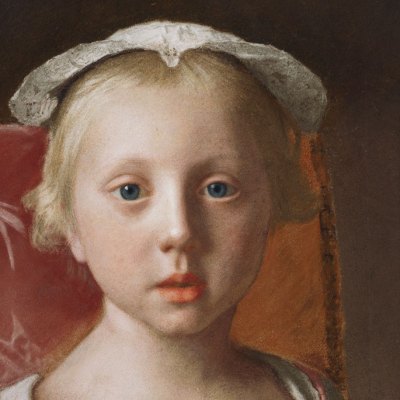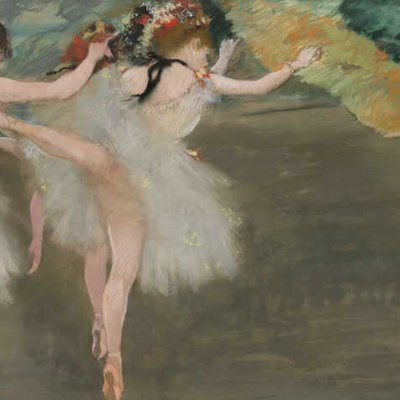From the September 2018 issue of Apollo. Preview and subscribe here.
‘Luminous and beautiful beyond all other pictures,’ as the English pastellist Francis Cotes put it, pastels have always had a special attraction for those who love them. Although the story of the medium can be traced much further back, a rare conjunction seems to have taken place soon after the Dutch artist Wallerant Vaillant is believed to have learned from Prince Rupert of the Rhine the secret of pastel – adding binders and fillers to ground pigment so it is soft enough to cover surfaces rather than scratch lines. The following year Vaillant was in Paris and, although no document proves they met, from 1660 Robert Nanteuil started to produce magnificent portraits in the medium. Suddenly drawing with coloured chalks was transformed into ‘la peinture en pastel’. Within a few decades full technical mastery was evident in the hands of Joseph Vivien, whose full-length portraits are every bit as realistic as oil painting. But it was not until Rosalba Carriera arrived in Paris in 1720/21 that the fashion took hold. Native talent – the big names were Maurice-Quentin de La Tour and Jean-Baptiste Perronneau – adopted the medium, which, with its unique subtlety and sophistication, embodied the Enlightenment. (Voltaire’s face may not be present, but a volume of his poetry and a character from one of his plays do appear in some of these works.)
The Marquise de Pompadour (1752–55), Maurice-Quentin de La Tour, Musée du Louvre, Paris. Photo: © RMN-Grand Palais (musée du Louvre)/Laurent Chastel

The technique spread through Europe, practised by individual geniuses such as Liotard or Mengs. But it was in France that the medium found the greatest favour – among many artists of real worth, even if their names today are somewhat obscure. The holdings of 17th- and 18th-century pastels in the Louvre form the paramount collection in the world (its nearest rivals in France being Saint-Quentin and Orléans, rather than Versailles as Xavier Salmon claims), and the publication of a modern catalogue (the first to appear since Geneviève Monnier’s in 1972) is a major event. Its launch is accompanied by an exhibition at the Louvre of its core holdings (until 10 September).
Compared with Monnier, Xavier Salmon’s volume immediately stands out for its excellent, large-scale reproductions, which alone make it a must for portrait specialists and dix-huitiémistes. The structure of the book will be familiar to readers of Monnier; 135 entries have now grown to 156, listed alphabetically by artist (irrespective of school) within each century, to which Salmon has added a section on ten pastels from wartime spoliation that are awaiting restitution. (Two have been recently returned, while two more of the Louvre pastels are lost or stolen.) An annexe summarily lists 34 pastels the Louvre has deposited with other museums; confusingly, five of these are given full entries in the main sequence. The others, at Versailles, were catalogued by Salmon in 1997 (in exemplary fashion for the time, leading to the highest expectations for the present volume), but the opportunity has not been taken to provide new photographs, to update bibliographies, to explain changes in attribution or the leaving out of two works. Two more pastels, from the Mirimonde bequest, have also been omitted. There are some questions regarding attribution, which I have discussed elsewhere, and there are also issues about the scope – some 19th-century works have crept in, while decisions about the inclusion of drawings with some pastel are inconsistent.
Portrait of François Girardon (1701), Joseph Vivien. Musée du Louvre. Photo: © RMN-Grand Palais (musée du Louvre)/Michel Urtado

There are splendid examples by a dozen major pastellists. Crowning them is the full-length portrait of Mme de Pompadour by La Tour, graced in the catalogue by a long and informative essay. There are another 18 pastels by La Tour, which include gems such as the king, queen and dauphin, as well as the brilliant Maurice de Saxe. Eight Perronneaus – headed for sheer bravura by Gabriel Huquier, but his daughter Marie-Anne is also a delight – revive the famous rivalry between the two artists. But seven Viviens (of which Girardon is the star), five Carrieras, four Labille-Guiards and so on demonstrate the importance of this form of portraiture in a way you cannot find elsewhere. The more subtle point – the depth of the French school – is also hinted at with brilliant examples from the rare Suzanne Roslin and the still more obscure François-Louis Gounod, augmented by the recent addition of Simon-Bernard Lenoir’s theatrical Lekain, in the role of Orosmane. It is perhaps surprising that the Louvre hasn’t taken advantage of the ridiculously low prices these unfashionable works command in the salerooms to build a wider reference collection, or broaden the holdings beyond the single-figure portrait (all but six examples).
The actor Henri Louis Cäin, in the role of Orosmane in Voltaire’s tragedy Zaïre (1769), Simon-Bernard Lenoir. Musée du Louvre, Paris. Photo: © RMN-Grand Palais (musée du Louvre)/Michel Urtado

The more obvious gap of course is in the foreign holdings. There is, for example, no Cotes. A group of several John Russells is almost the sole exception: the gift in 1869 of the little girl with cherries (whom I recently identified as Mary Hall) illustrates the power of the Louvre to change the standing of artists. Instantly copied and reproduced, Russell became an honorary French artist, and his name appears in many of the grand collections and exhibitions in Paris during pastel’s second heyday from the 1880s until the First World War. In the exhibition the single Liotard rubs shoulders uncomfortably with Perronneau and Valade, the mutual incomprehension as evident today as it was when the Swiss artist was rejected by Paris and again when in 1884 a Louvre conservateur, Henry de Chennevières, denounced his work as not worth the least production by one of Perronneau’s pupils. (Pierre Rosenberg deplored the failure of the Louvre to enrich its holdings in recent years, apart from this beautiful example, in his Dictionnaire amoureux du Louvre, 2007.)
Madame Jean Tronchin, née Anne Molènes (1758), Jean-Étienne Liotard, Musée du Louvre, Paris. Photo: © RMN-Grand Palais (musée du Louvre)/Michel Urtado

The text documents some of this progression rather drily, but readers could have benefited from more information about previous owners, the evolution of taste and the pastels the Louvre didn’t buy. Instead there are descriptions of physical structure (but little about condition, frames or scientific analysis of pigments or fixatives) and lengthy bibliographies (which are however neither complete nor intelligently selective). Perhaps much of this could have been put online, freeing space for a more generous selection of comparative illustrations. This is not the place to list the numerous minor errors that have crept into the book.
Pastels du musée du Louvre. XVIIe–XVIIIe siècles by Xavier Salmon is published by Éditions du Louvre (French edition); the English edition is published by Éditions Hazan.
From the September 2018 issue of Apollo. Preview and subscribe here.



